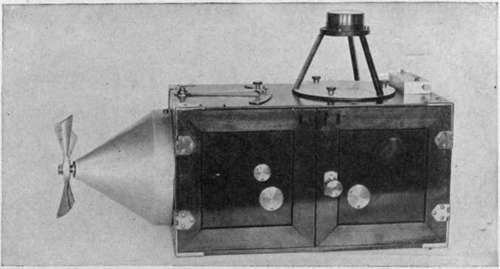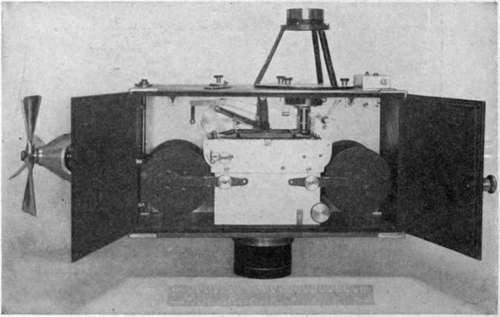Representative Film Cameras. The English F Type (Williamson)
Description
This section is from the book "Airplane Photography", by Herbert E. Ives. Also available from Amazon: Airplane photography.
Representative Film Cameras. The English F Type (Williamson)
This is one of the earliest cameras designed for film, as is indicated by the nature of the power drive, which presupposes that the camera is to be carried on the outside of the fuselage. Its essential features are shown in Figs. 57 and 58. It consists of a rectangular box with a cone at the front on which is mounted a propeller, intended to be rotated by the wind made by the motion of the plane. This drives, through a governor controlled friction clutch, a train of gears which draws the (5X4 inch) film across the focal plane, sets and exposes the shutter at regular intervals.

Fig. 57. - English type "F" (Williamson) automatic film camera.
Above the camera, supported on a tripod, are a compass and altimeter, both recording on a single dial, illuminated from below by the light reflected from a circular white disc painted on top of the camera. An image of the dial is thrown on a corner of the film by a lens, whose shutter is actuated in synchronism with the main focal-plane shutter. No special means are provided for holding the film flat. Special film with perforated edges is used.

Fig. 58. - Interior of type "F" camera, showing lens for photographing compass and altitude readings.
The camera was designed for mapping work on the Mesopotamian and other fronts where no maps at all existed.
Continue to:
Tags
camera, lens, airplane, aerial, film, exposure, photography, maps, birdseye
